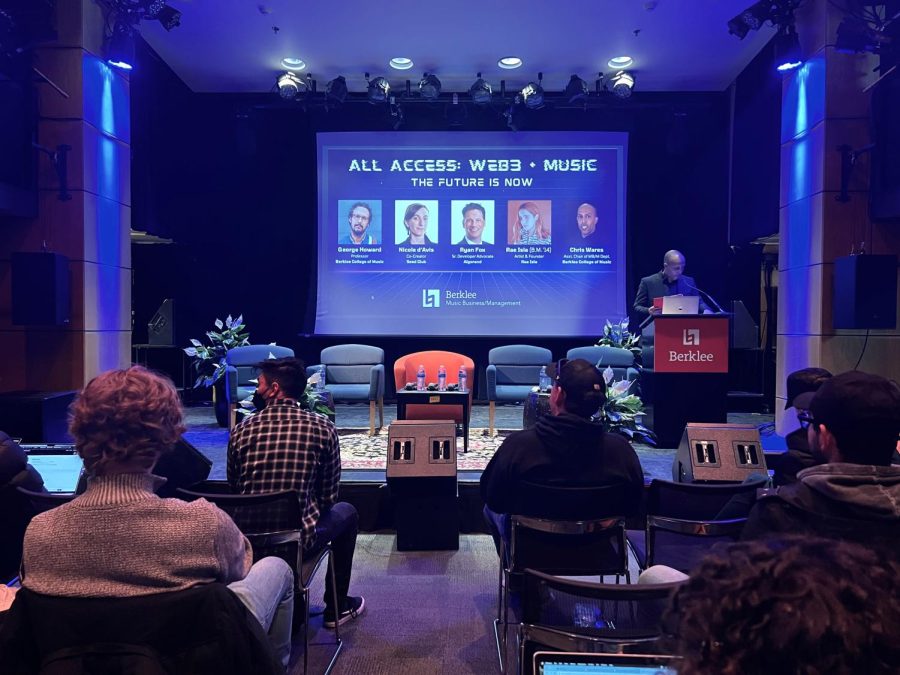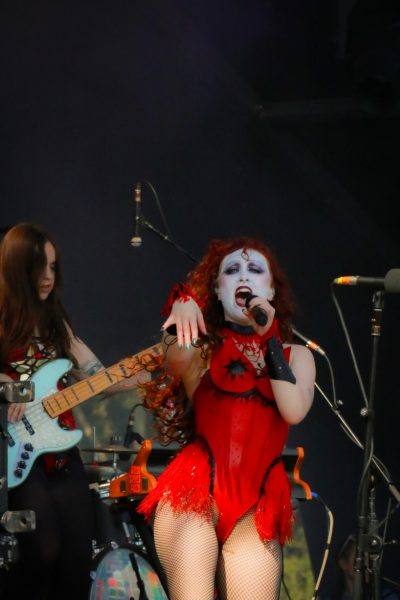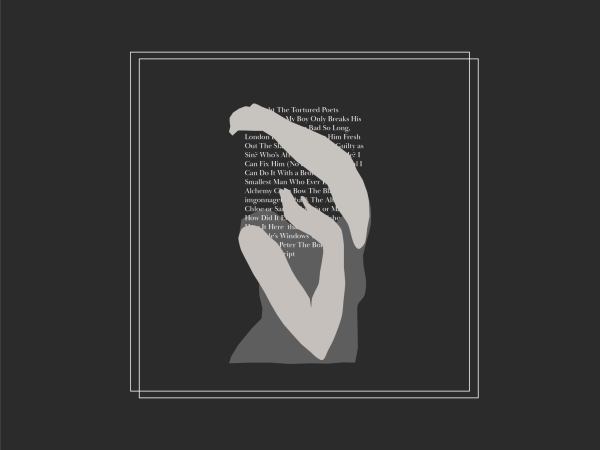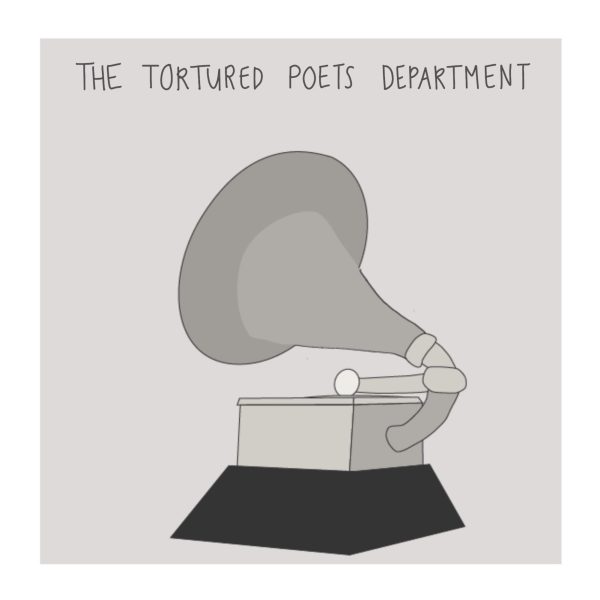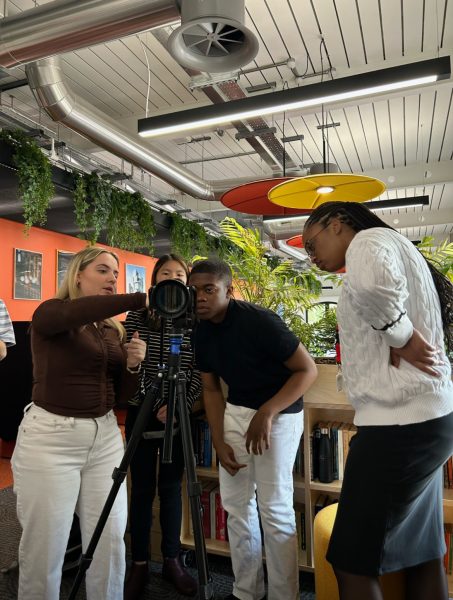Technology experts, musicians and artists discuss transformative potential of blockchain at Berklee panel
The audience waits for a presentation and panel on Web3 and blockchain’s potential in creative industries. Berklee College of Music hosted the event, which was open to students and the public.
March 24, 2023
Berklee College of Music hosted an “All Access: Music + Web3” presentation and panel March 8, in which industry experts, musicians and blockchain developers gathered to explain the potential of blockchain technology in the music industry. Blockchain is a secure and shared digital ledger, and Web3 is said to be the next generation of the internet that incorporates blockchain technology.
The event focused on how blockchain could revolutionize music distribution and monetization and offer a more transparent and equitable system for artists. The panelists included George Howard, a Berklee professor and co-founder and chief information officer of ACME Innovation; Nicole d’Avis, co-creator of Seed Club; Ryan Fox, senior developer advocate at Algorand; and Rae Isla, an independent artist and founder of Rae Isla and Berklee alum. The session was moderated by Christopher Wares, assistant chair of music business and management at Berklee.
Smart contracts, or code written into a blockchain that executes the terms of an agreement or contract from outside the chain, were a central topic of discussion. Experts highlighted their potential to ensure that artists receive fair payment for their work. The use of non-fungible tokens, or NFTs, was also explored, with panelists discussing how these unique digital assets could create new revenue streams for musicians and offer fans another way to support their favorite artists.
The event also broadcasted performances by up-and-coming musicians experimenting with blockchain technology to create and distribute their music. In the videos, these musicians showcased the potential of blockchain to empower artists and enable new forms of creativity, like Isla’s project collecting rocks as music NFTs.
Throughout the conference, industry leaders shared their insights on the possibilities of blockchain for the music industry, paving the way for a more innovative and fair system. They said by eliminating middlemen and reducing the potential for exploitation, blockchain technology could transform the way music is created, distributed and consumed.
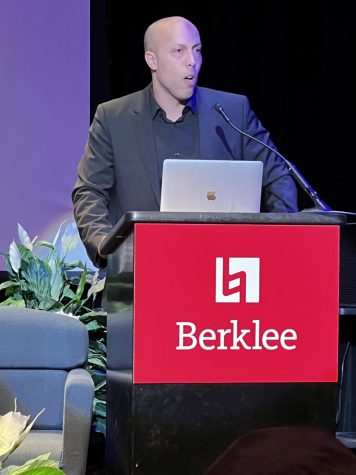
Christopher Wares opens the “All Access: Music + Web3” event March 8 in the David Friend Recital Hall by introducing the panelists. As the assistant chair of music business and management at Berklee, he said he was excited to give the opening remarks and introduce blockchain, Web3 and the panelists.
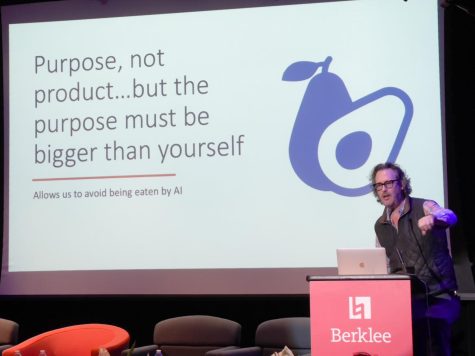
Panelist George Howard gives a short presentation introducing himself, his background and expertise on entrepreneurship, marketing, copyright law and leadership. The presentation was a short lecture that explained the context for the panel discussion and covered key concepts in Web3 and blockchain, along with their connection to art and mental health.
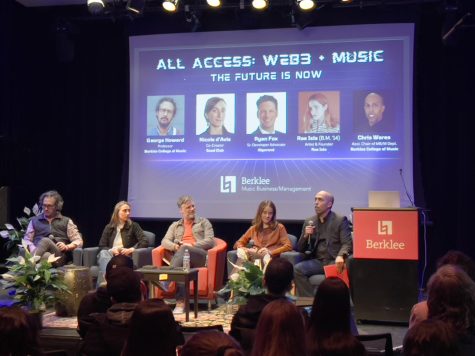
Wares poses questions about opportunities for independent artists to raise money and build their own music community to the panelists. The discussion covered perspectives on subscription models, building fan communities, creating a “vibe” and the possibility of giving NFTs for free to spread awareness.
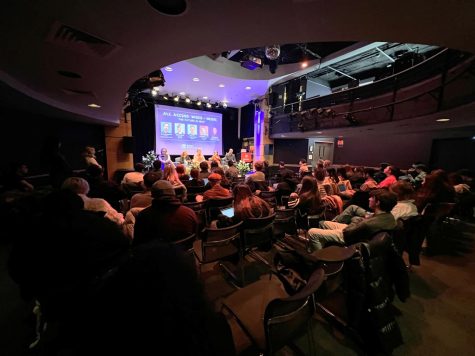
Around 60 people showed up to listen to the presentation and panel discussion. The audience consisted of students from Berklee, music students from other schools, music business professionals and independent artists who wanted to learn about Web3 and its potential benefits.
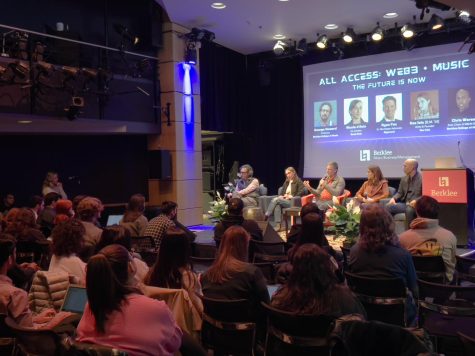
The panelists open up the conversation to questions from the audience. The diverse set of panelists each shared their own perspectives and provided a comprehensive explanation of adapting the longevity of NFTs to fast-paced and trend-based societies, as well as ways to rebrand NFTs.
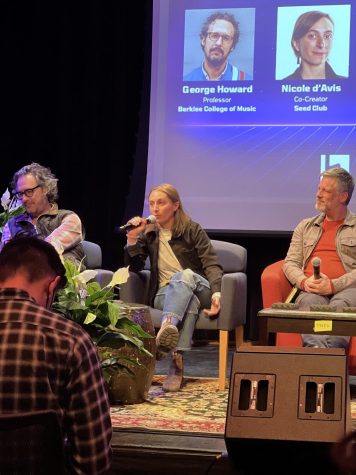
D’Avis talks about the resources available to access and place NFTs and leverage the tools to build their community. She discussed the need to focus on building products and create experiences specifically for the music industry.
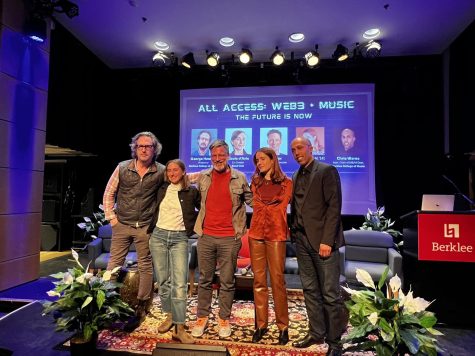
The panelists pose for a group photo at the end of the event. Afterward, audience members made new connections and exchanged contact information with panelists for further questions and guidance.


